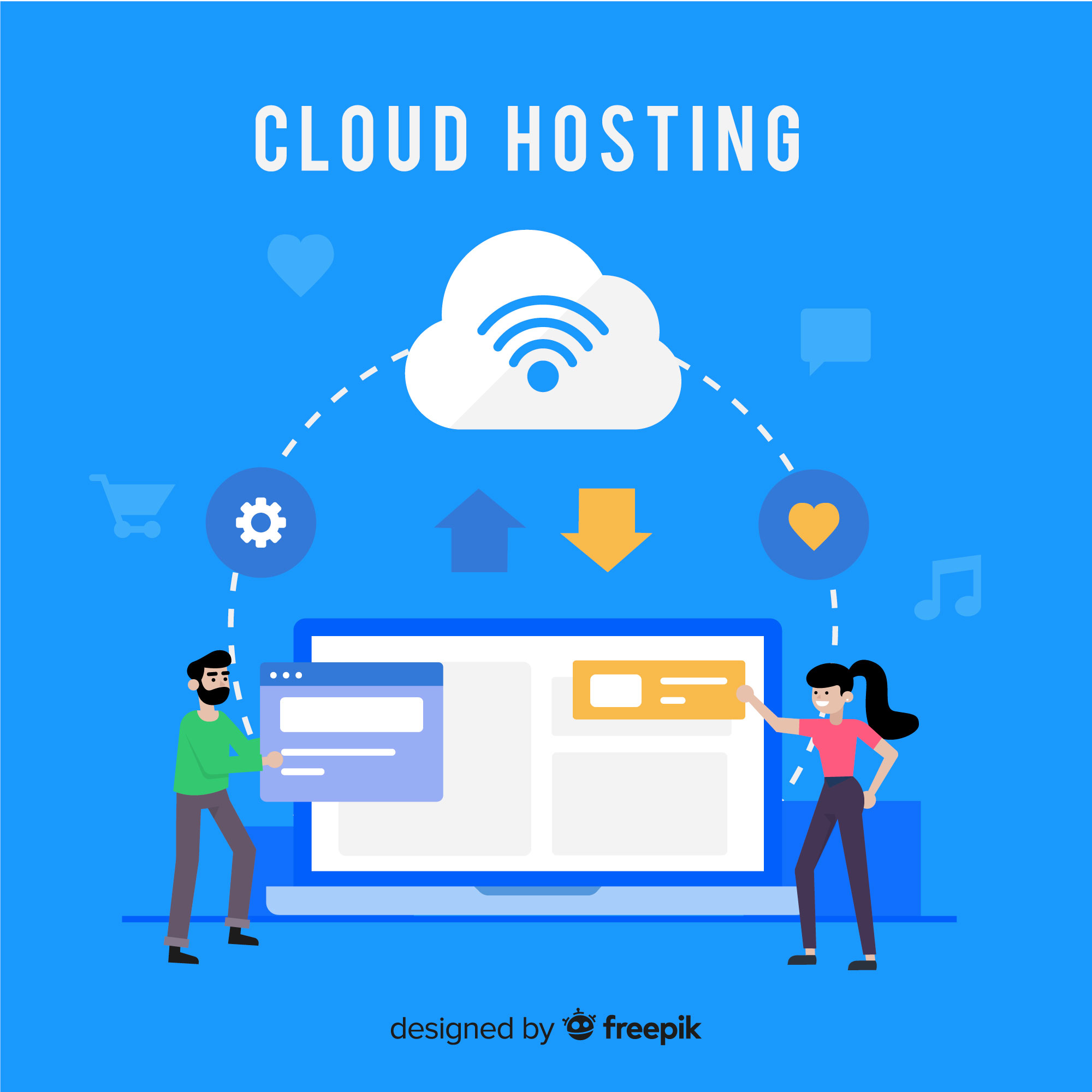The definitive guide to cloud computing options: public, private, hybrid, or multi-cloud: what's the difference?

One of the most important decisions that every contemporary company must make is selecting the appropriate cloud strategy. Building a foundation for your operations that is scalable, safe, and cost-effective is not the only thing that needs to be done; transferring your data off-site is not the only step. The choice might seem daunting when there are so many alternatives available, including public, private, hybrid, and multi-cloud cloud computing. This all-encompassing guide will walk you through each model, assisting you in comprehending its fundamental advantages, disadvantages, and optimal use cases. With this knowledge, you will be able to confidently choose the cloud solution that is most suited for your company.
Important Things to Think About Before Making a Decision
Before delving into the particulars of each cloud type, it is vital to determine the exact requirements that your company has established. Inquire of yourself the following important questions:
- What are your security and compliance requirements? Highly regulated sectors such as healthcare and finance often have stringent data residency and security rules. • What are your security and compliance requirements?
- What is your financial plan? The expenses of using the cloud vary greatly depending on the model and the amount of consumption.
- How much control do you require? The question is whether you need to handle your own servers and software or if you are happy with a supplier managing the back-end of your business.
- Are you looking for scalability in your system? Is the workload at your company significantly changeable or does it tend to be quite consistent?
- What is the current state of your information technology infrastructure? Do you have major investments that are located on-premises that you would want to leverage?
The Pay-as-You-Go Model of the Public Cloud Network

One definition of a "public cloud" is a computer service that is provided by a third-party provider and is distributed via the public internet. Consider this to be the same as renting a shared computer environment that is virtualised. All of the infrastructure, including the hardware, software, and other components, is owned and managed by the provider. You get access to the services that you need, which may include artificial intelligence and machine learning tools, virtual machines, and storage, and you pay only for the services that you really use.
Advantages of Utilising a Public Cloud:
Cost-Effective:There is no need to make costly investments in hardware or maintenance since this solution is cost-effective. Because it is based on a pay-as-you-go approach, it is very economical for startups and newly established enterprises.
Scalability:The scalability of public clouds is almost endless, making them an attractive option. Businesses that experience seasonal or irregular traffic are great candidates for these resources because of their ability to be easily scaled up or down to meet variable demand.
Reduced Management Overhead:There is a reduction in the management overhead. Your internal information technology staff will be able to concentrate on essential business operations since the provider will handle all of the infrastructure management, security upgrades, and maintenance of the system.
The Downsides of Using a Public Cloud:
- Less Control: You have little control over the underlying infrastructure, and you are governed by the terms of service that the provider has established.
- Potential Security worries: Even though providers like Amazon Web Services and Microsoft Azure devote a significant amount of resources to security, the shared, multitenant environment may cause enterprises that deal with highly sensitive data to have worries.
- Vendor Lock-in: The process of moving your data and apps from one public cloud provider to another may be difficult and expensive. This is referred to as "vendor lock-in."
Ideal for:Startups, small companies, and organisations that seek a solution that is flexible, scalable, and low-cost for online applications and data that is not sensitive are ideal candidates for this solution.
Your Own Private Cloud: A Cloud Environment That Is Both Secure and Personal

A cloud computing infrastructure that is devoted only to the exclusive use of a single business is referred to as a private cloud. The infrastructure may be maintained by a third-party vendor or housed on-premises in your own data centre. Both options are possibilities. This paradigm provides the advantages of the cloud, such as flexibility and efficiency, together with the benefits of a private IT environment, which include increased security and control.
The Advantages of Utilising a Private Cloud:
- Enhanced Security: When you use a private cloud, you have full control over the data and security standards that are used for your organisation. Because of this, it proves to be an excellent option for businesses operating in highly regulated sectors.
- Maximum Control and Customization:You can change the hardware, software, and network settings to fit your individual requirements. This feature provides you with maximum control and customisation. This makes it possible to fine-tune Performance and ensure compliance with specific business needs on an individual basis.
- Predictable Performance :Because resources are not shared, you can enjoy consistent performance without the "noisy neighbour" effect that is occasionally seen in public cloud environments.
The Private Cloud Has the Following Drawbacks:

- Higher Costs:The construction and upkeep of a private cloud requires a substantial financial commitment in the form of hardware, software, and staff with the necessary expertise.
- Limited Scalability: Although private clouds are more scalable than conventional on-premises systems, they are not as elastic as public clouds. This is a limitation of private clouds over public clouds. In many cases, scaling up necessitates the acquisition of extra gear.
- Increased Management Overhead: Your team is responsible for all maintenance, fixes, and updates, which may be resource-intensive. This might come with increased management overhead.
Ideal for:Large businesses and organisations operating in regulated areas (such as healthcare, government, and finance) that demand stringent control over data, security, and compliance are ideal candidates for this solution.
The Hybrid Cloud: Representing the Best of Both Worlds

In a hybrid cloud approach, a public cloud and a private cloud are combined in order to enable the sharing of data and applications across the two types of clouds simultaneously. The public cloud may be used for workloads that are not sensitive and have a high demand, while the private cloud can be used for operations that are sensitive and mission-critical. This approach offers you the freedom to employ both clouds.
Advantages of Utilising a Hybrid Cloud:
- Flexibility: In terms of flexibility, you are able to take advantage of the most advantageous aspects of both public and private clouds. You may, for instance, utilize the public cloud for burst capacity during high demand (a process that is known as cloud bursting), while at the same time ensuring that your private cloud is the safest place for your most important data.
- Optimisation of Costs: Managing expenses may be accomplished by using the pay-as-you-go model of the public cloud for workloads that are not mission-critical, and reserving your private cloud for activities that are absolutely necessary.
- Increased Safety and Protection: Through the use of hybrid clouds, it is possible to keep sensitive data in a private and secure environment, while simultaneously making use of public cloud services for other purposes.
Inadequacies of the Hybrid Cloud Structure:
- Complexity: The administration of a hybrid cloud may be difficult since it requires a connectivity that is smooth connectivity and management that is uniform management across a variety of settings.
- Integration Challenges: Maintaining compatibility and ensuring a seamless flow of data between the public and private components may be a substantial challenge from a technological standpoint.
Ideal for:Businesses that have a combination of sensitive and non-sensitive workloads, as well as those that wish to make a gradual transition to the cloud, are ideal candidates for this solution.
Multi-Cloud: Going Beyond a Single Provider
Using services from two or more separate public cloud providers (such as Amazon Web Services, Microsoft Azure, Google Cloud Platform, and so on) is an example of a multi-cloud approach. In contrast to a hybrid cloud, which is a combination of a public and a private environment, a multi-cloud strategy makes use of numerous public clouds in order to avoid being locked in with a single vendor and to optimize for certain services.
Advantages of Utilising Multiple Clouds:
- Enhanced Capacity for Resilience and Dependability: You can fail over to a new cloud provider if one of your cloud providers has an outage. This will ensure that your company continues uninterrupted.
- Services that are of the highest quality: There are certain advantages that each cloud service has. You could make use of Google Cloud for its artificial intelligence and machine learning technologies, while also using Microsoft Azure for its seamless interaction with Microsoft 365 solutions.
Avoiding Being Locked in by a Vendor," By using several different suppliers, you lessen your dependence on a single vendor and increase your ability to negotiate more favourable terms.
The Downsides of Using Multiple Clouds:
- Higher Management Complexity: A trained staff and a powerful management platform are required in order to manage several cloud environments successfully. This is referred to as "higher management complexity." When compared to managing a solution from a single provider, this may be more complicated.
- Potential for Increased Costs: There is a possibility that costs may expand: In the absence of a well-defined plan, the employment of many suppliers might result in unanticipated expenses and inefficient allocation of resources.
This solution is ideal for large businesses that place a high priority on resilience, want to avoid being locked in with a single vendor, and need the ability to use specialised services from a variety of suppliers.
A Guide to Selecting the Appropriate Cloud Configuration for Your Organisation

The decision that is best for you is totally determined by the needs that you have in mind. Here is a simple structure that will assist you in making your choice:
Public Cloud: Ideal for new enterprises, startups, and those seeking cost reductions and quick growth. Consider the case of a media streaming service that has a user base that is very changeable.
The Private Cloud: The best option for organisations such as government agencies, healthcare providers, and financial institutions that want the highest possible level of control, security, and regulatory compliance.
Hybrid Cloud: Ideal for well-established companies that want to update their information technology infrastructure without undergoing a major redesign. This kind of cloud enables these companies to capitalize on their current investments in on-premises infrastructure while also enjoying the flexibility that the cloud provides.
Multi-Cloud: Designed for big, multinational corporations that place a high priority on disaster recovery, independence from vendors, and access to a diverse variety of specialised services. The cloud no longer offers a "one-size-fits-all" answer. Your company should pursue a strategic option that strikes a balance between cost, control, security, and Performance to make the best decision. You will be able to construct a cloud strategy that can sustain the expansion of your company for many years to come if you thoroughly evaluate your requirements and get a grasp of the specific benefits that each model offers.
Guarantee the Safety of Your Cloud Future: Get in Touch with Us About a Consultation
Discovering how to navigate the complexity of cloud computing may be a difficult task. Our team of highly skilled cloud architects is able to assist you in developing and putting into action the ideal cloud strategy that is suited to the requirements of your company. Your cloud future should not be left up to chance; get in touch with us right now to get a free consultation.
